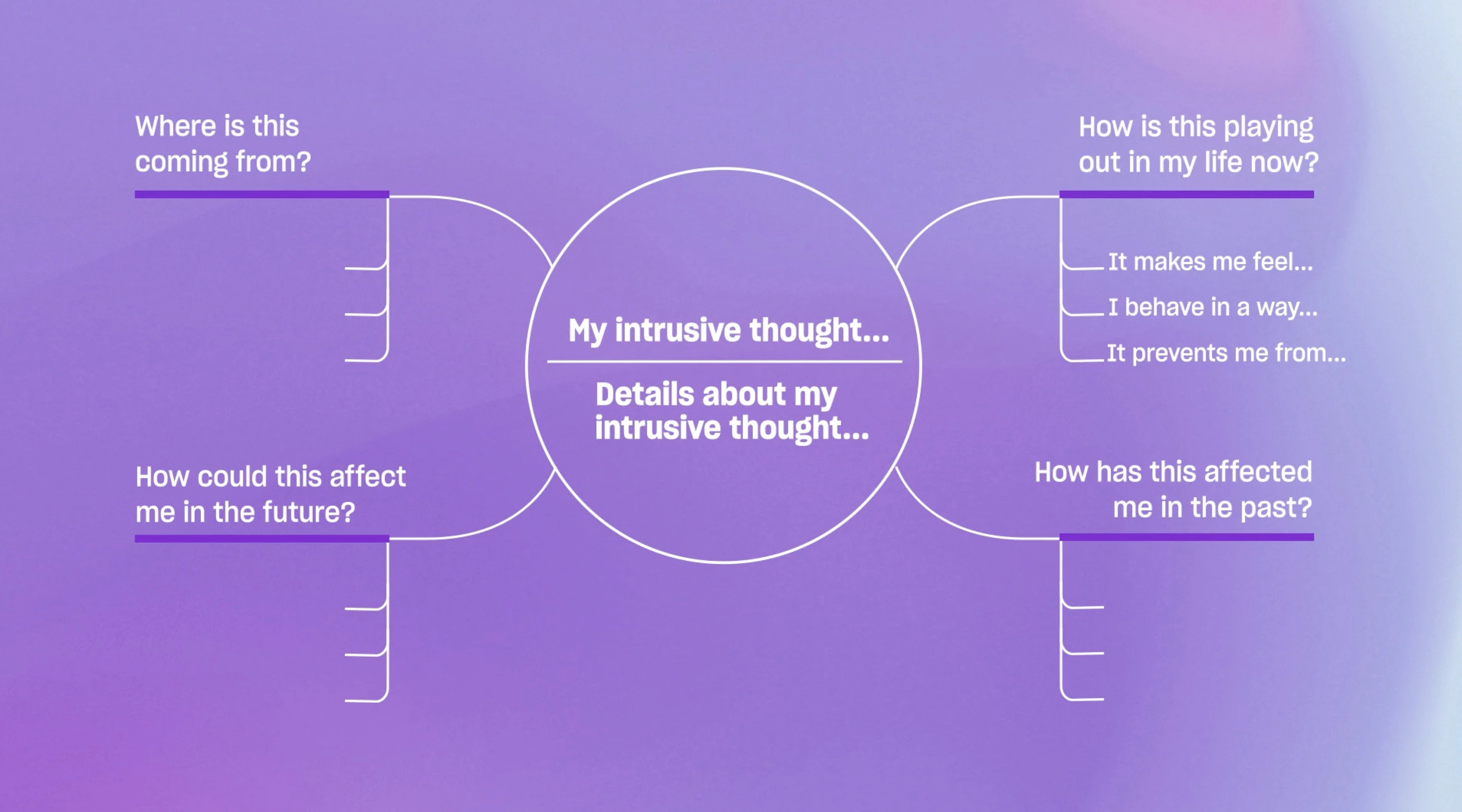Does your life feel like playing a game of Jenga: one wrong move and everything comes crashing down? What makes it so is the pervasive stress that can feel like a never-ending battle to keep everything in balance. The good news is that you can regain your equilibrium in life with mindfulness-based stress reduction.
When you are mindful, you are at peace because you are simply observing all that is happening within you, to you, and around you, withholding judgment or reaction. While you can’t control the world around you, you can control your inner state and choose to stay calm and peaceful.
What is mindfulness-based stress reduction?
In a state of mindfulness, you find that no matter what happens, by simply observing it without judging it, you find peace.
That peace comes from knowing that your energy is best spent on things that are within your control, which you discover are only your thoughts and actions.
Cultures since ancient times have known this to be true, but the scientific use of mindfulness was only revealed in the 1970s by Jon Kabat-Zinn, who pioneered a technique called “Mindfulness-Based Stress Reduction” (MBSR), which he wrote about in his famous book Full Catastrophe Living.
It was turned into an eight-week mindfulness training program in 1979 at the University of Massachusetts Medical Center. Essentially, it combines mindfulness meditation, yoga, and body awareness.
What they found is that practicing this technique for twenty minutes every day can significantly decrease stress. On top of that, you will improve your immune function, reduce pain, stabilize your mood, and increase self-control.
Dr. Caroline Leaf’s MBSR contribution
Dr. Caroline Leaf, a renowned cognitive neuroscientist and the trainer of Mindvalley’s Calm Mind: A Scientific Method for Managing Anxiety and Depression Quest, has taken it to a whole new level with her innovative approach to MBSR.
According to Dr. Leaf, your thoughts can virtually change the physical structure of your brain. And by practicing mindfulness and intentional thinking, you can rewire it to think more positively and reduce stress. It’s like a mental workout, but instead of lifting weights, you’re uplifting your own thoughts. This is when you intentionally use neuroplasticity—your ability to use your mind to change your thoughts. And the key, like in any workout, is consistency.
Where your mind goes, your brain and body follow; where your mind goes, your life follows.
— Dr. Caroline Leaf, trainer of Mindvalley’s Calm Mind: A Scientific Method for Managing Anxiety and Depression Quest
Benefits of MBSR
As the name suggests, MBSR has been shown to significantly reduce stress levels. According to this MBSR program’s results, participants reported a 33% reduction in perceived stress compared to those who did not participate in the program.
Here are a few other benefits of MBSR:
- Improved sleep quality,
- Reduced symptoms of anxiety and depression,
- Lowered blood pressure, and
- Improved cognitive functions such as memory, attention, and decision-making.
Indeed, when you are less stressed, you can easily access your fullest mental powers. The best part is that even just eight weeks of MBSR can lead to significant improvements in well-being and quality of life.
9 mindfulness-based stress reduction techniques
Though the MSBR program is extremely beneficial, it requires you to invest 8 weeks of your time in a group class. However, by practicing any or all of the techniques below, you can begin to live a more mindful life.
To begin, choose an exercise that seems easy to you. By choosing a simple exercise, you can help calm the part of your brain that is always waiting for the next “disaster.”
1. Practice mantra meditation
As you focus on thoughts, your brain likes to take the opportunity to present you with all of the other things going on in your life that seem important. Instead, you can focus on a word or phrase, such as ancient mantras. Not only do they help re-direct your thoughts, but they also soothe your senses and facilitate greater mindfulness.
The more you practice, the easier it will become, and the more benefits you’ll start to see in your daily life.
How to do it:
- Sit comfortably and close your eyes. Don’t let yourself get into a position where you might fall asleep. Take a moment to relax and release any tension in your body.
- Repeat a mantra in your mind that you would like to affirm. For example, instead of “I am not stressed,” say, “I am at peace.”
- Continue repeating the mantra for 5–10 minutes.
Your mind will attempt to distract you with thoughts. That’s ok. Acknowledge the distraction and move on, bringing your attention back to the mantra. Do not judge yourself for the distraction. It will happen. It is natural. Let it be.
2. Become aware of your emotions
Stress happens because we allow fear, anger, disappointment, and a host of other negative emotions to guide our actions. By becoming aware of these emotions and allowing them to simply be, you can begin to gain control over how you react and respond to stressful situations.
This exercise is best performed when you are experiencing the downfall of an emotion. In other words, practice this exercise when you have recently experienced a strong emotion but are not directly in the “eye of the storm.”
How to do it:
- Sit comfortably and close your eyes. Don’t let yourself get into a position where you might fall asleep. Take a moment to relax and release any tension in your body.
- Focus on your emotions. Allow your emotions to rise within you. Just sit and wait for them to appear.
- Name them as they appear. Allow them to exist without judging them. Just name them and let them rise within you.
- Feel them in your body, but don’t stop them. Let them run their course.
- Once you have accepted your emotions and let them move within you without reaction or judgment, you can dismiss them and allow them to fade away.
3. Deconstruct your intrusive thoughts
Dr. Leaf explains that intrusive thoughts often feel like a volcano: they build and build over a period of time, then erupt, destroying everything in their path.
This analogy shows that unmanaged thoughts will keep erupting like a volcano, and thought management is about making this volcano extinct. And this is what controlling your triggers essentially means.
She says, “Your story doesn’t disappear, but it’s no longer erupting, creating damage to your life.” One of the ways to do so is to deconstruct your thoughts using Dr. Leaf’s diagram.

How to do it:
- Give your intrusive thought a name, and describe it.
- How is this playing out in your life now?
- How did it affect you in the past?
- How could it affect your future?
- Where is this coming from?
4. Practice self-control with urges
This is a fun exercise to try because it floods your brain with neurotransmitters.
When you become more mindful, you can experience this surge of chemicals in your brain and simply allow it to occur without reacting.
How to do it:
- Get your favorite treat. It can be a piece of chocolate or a taco. It doesn’t matter as long as it’s something you really want.
- Now, place the treat in front of you, and without touching it, notice what is happening inside of your body.
- Feel the saliva building up in your mouth. Feel the warmth on your face and hands. Perhaps the center of your chest is buzzing. Maybe your heart is racing and you feel dizzy.
- Take the time to really focus on what your body is doing. Your brain is firing off neurotransmitters that are motivating you to take action. Take note of those responses. How is your body preparing itself for this treat?
- Keep focusing on those reactions. They will come to you in a wave. They will grow in strength, peak at a point that you feel you can no longer handle, and then they will begin to subside.
- Finally, put the treat away. If you need to feel the power of throwing it away, do so.
- Do whatever it takes to make a bold statement to yourself that you are not going to respond to the sensations of cravings. Tell your mind and your body that it does not control you.
5. Do EFT tapping
EFT tapping is an efficient tool that helps you process unwanted emotions, negative thoughts, and limiting beliefs. It utilizes mind-body connection, neuroplasticity, and the ancient wisdom of meridian points. When you tap on specific acupressure points on the body while focusing on the issue causing you stress and anxiety, you:
- Bring it to your consciousness,
- Release it from your body,
- Restore the energy flow,
- Rewire your brain, and
- Instantly soothe yourself.
It’s like giving yourself a little massage and a comforting pep talk at the same time. Most importantly, by practicing it regularly, you restore your sense of safety and cultivate unconditional self-love.
6. Practice loving-kindness meditation
In this meditation, you send love and positive energy to yourself and others. Not only does it help you expand your heart but also significantly reduces your levels of stress, according to science.
How to do it:
- Find a comfortable seated position. Close your eyes and begin by focusing on your breath.
- Breathe in slowly and deeply through your nose and out through your mouth. Let your breath become calm and steady.
- Once you feel calm and centered, start to visualize someone in your life who you love and care deeply for. Imagine them in your mind’s eye, and visualize them happy and healthy.
- Repeat the following phrases silently to yourself, “May you be happy. May you be healthy. May you be safe. May you live with ease.” As you repeat each phrase, imagine sending love, compassion, and positive energy to the person you’re visualizing.
- After a few minutes, extend your love and compassion to strangers. Continue this process, gradually expanding your circle of compassion to include all beings.
- Notice that your heart is expanded, your mind is open, and your compassion is reaching all directions in the Universe.
- Let go of that image and return to your breathing. Ground yourself in the present moment.
7. Breathe mindfully
Your breath is directly connected to your nervous system. When you breathe calmly and rhythmically, it instantly calms you. On the contrary, shallow and rapid breathing puts you in “fight or flight” mode.
This is why breathwork is one of the most effective and natural ways to reduce stress, according to science. For example, the 4-7-8 breathing pattern helps activate your body’s relaxation response.
How to do it:
- Sit comfortably with your eyes closed.
- Start by exhaling completely through your mouth, making a whooshing sound.
- Close your mouth and inhale quietly through your nose to a mental count of four.
- Hold your breath for a count of seven.
- Exhale completely through your mouth, making a whooshing sound to a count of eight.
- This completes one cycle. Repeat the cycle three more times for a total of four cycles.
8. Scan your body
The body scan technique is a type of mindfulness meditation in which you scan your body from head to toe, paying attention to any physical sensations, tension, or discomfort. It’s a great tool for reducing stress and increasing body awareness, backed up by multiple studies.
How to do it:
- Find a comfortable position, either lying down or sitting in a chair. Make sure you’re in a quiet, distraction-free environment.
- With your eyes closed, focus on your breath, paying attention to the rise and fall of your chest and belly.
- Start from the top of your head, noticing any physical sensations, tension, or discomfort that you may be feeling in this area.
- Slowly move your attention down your body: your neck, shoulders, chest, arms, all the way to the toes. Scan each area and notice any physical sensations without judgment.
- If you notice any tension or discomfort, take a few deep breaths and visualize the tension releasing with each exhalation. Imagine the tension melting away like butter.
- When you’ve scanned your toes, bring your attention back to your breath. Notice how you feel, both physically and mentally.
9. Practice progressive muscle relaxation
Progressive muscle relaxation (PMR) works by activating the body’s “relaxation response,” which counteracts the effects of the stress response. It also promotes the release of endorphins and improves blood flow and circulation.
Most importantly, this technique increases your bodily awareness, enabling you to identify and release tension in your body as soon as it arises.
Want to take it to the next level? Combine it with music therapy.
How to do it:
- Find a comfortable position, either lying down or sitting in a chair. Make sure you’re in a quiet, distraction-free environment.
- Close your eyes and start breathing deeply and rhythmically.
- Start with your feet: tense the muscles as tightly as you can and hold them for a few seconds. On your exhale, slowly release the tension. Notice the sensation of relaxation in your feet.
- Move on to your calves, working your way up your body all the way to your face. Pay attention to any physical sensations or changes in your body as you relax each muscle group.
- In the end, come back to your breath and notice how you feel, both physically and mentally.
Whatever technique you choose, the key is to find what works for you and make it a regular part of your routine.
Meditation and MBSR
This systematic review has revealed that an 8-week MBSR induces brain changes similar to traditional long-term meditation practice. So, at its core, MBSR is a form of mindfulness meditation, as it enables you to cultivate present-moment awareness and non-judgmental acceptance of your thoughts, feelings, and bodily sensations. When you do it regularly, you grow to understand your own patterns of stress and reactivity and gain greater control in every moment.
In addition, meditation activates the body’s relaxation response. In other words, it overrides your daily stress by promoting feelings of calm and relaxation.
How to practice it:
- Sit in a quiet place where you won’t be disturbed. You can keep your eyes closed or open with a soft gaze.
- Bring your attention to your breath. Notice the sensation of the breath as it enters and leaves your body. Follow the breath with your attention, and when your mind wanders, gently bring it back to the breath.
- As you continue to focus on your breath, allow yourself to be fully present in the moment. Notice any thoughts or feelings that arise without judging them or getting caught up in them.
- Practice regularly.
Dr. Caroline Leaf’s mindfulness-based stress reduction course
Dr. Leaf’s Mindfulness-Based Stress Reduction course is a ground-breaking program that will completely shift your understanding of mental health. At the heart of her approach is the mind-brain-body connection.
According to her extensive practice and scientific research, “your mind drives your brain,” meaning that your thoughts and perceptions direct your body and your life.
Dr. Leaf calls it a “mind and mental health management” framework that enables you to develop connections between the different levels of the mind to self-regulate and manage your mental health effectively. Her approach completely shifts the common understanding of anxiety, depression, and chronic stress.
The course is divided into two parts:
- In the first part, you will understand the power of the mind-brain-body connection: the difference between the mind and brain and how the mind affects your brain and biology. You will learn how to manage your mind to deal with intrusive thoughts and chronic stress.
- In the second part, you will gain a new perspective on mental health and learn how to cultivate inner resilience.
As Dr. Leaf puts it, “Mental health is for everyone,” so everyone can master their mind to live a healthy life.
Mastering your mind-brain-body connection
Scientifically speaking, the mind-brain-body connection is psycho-neurobiology, which postulates that these three are interconnected. According to Dr. Leaf, once you understand what the mind is and how it drives the brain and the body, you will be able to manage your mind and, therefore, your life in the ways you want.
If you aspire to completely shift your understanding of the mind, in Dr. Caroline Leaf’s Calm Mind: A Scientific Method for Managing Anxiety and Depression Quest on Mindvalley, you’ll learn:
- The power of the mind-brain-body connection,
- Strategies for managing intrusive thoughts, and
- How to master self-regulation.
What’s more, by signing up for a free account, you get access to the first few lessons from this Quest.
Welcome in.









